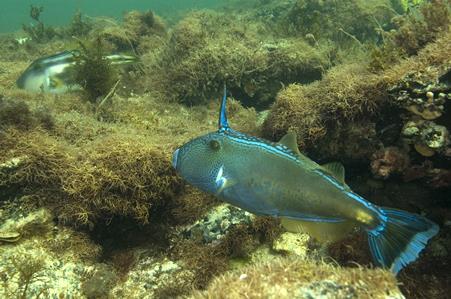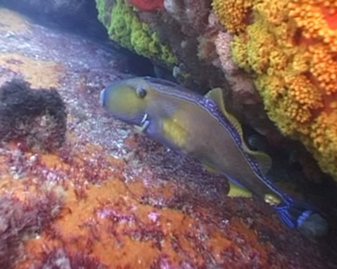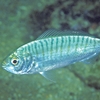General Description
Body long, moderately deep, compressed; tail base with two to four pairs of curved spines on each side, males with larges spines than females; two separate dorsal fins, the first a prominent spine with serrations along the rear edges, followed by a tiny second spine, enabling the large spine to be locked erect or depressed into a shallow groove along the back. Males and females are sexually dimorphic and the colour pattern is highly variable throughout their range. Males usually bluish, with fine angled blue lines and spots on the head, distinct lines along the bases of the dorsal and anal fins, and often a large yellow or orange patch, or indistinct yellowy blotches on the sides. Females and juveniles usually pale greenish, yellow or brown, with blue lines and spots on the head and several broad dark stripes along the body. Both males and females have a distinct dark crescent-shaped band near the hind margin of the tail. To 55 cm.
Biology
Feeds on a range of benthic invertebrates.
Habitat
On shallow reefs in bays, harbours and along the coast in depths to 145 m; juveniles in sheltered areas, especially seagrass beds.
Reefs
Seagrass meadows
Distribution guide
Southern Australia.
Species Group
Depth
Shallow (1-30 m)
Deep ( > 30 m)
Water Column
Max Size
55 cm
Diet
Carnivore
Harmful
Large dorsal spine could punture skin.
Commercial Species
Yes
Global Dispersal
Native to Australia
Identify
Conservation Status
- DSE Advisory List : Not listed
- EPBC Act 1999 : Not listed
- IUCN Red List : Not listed











